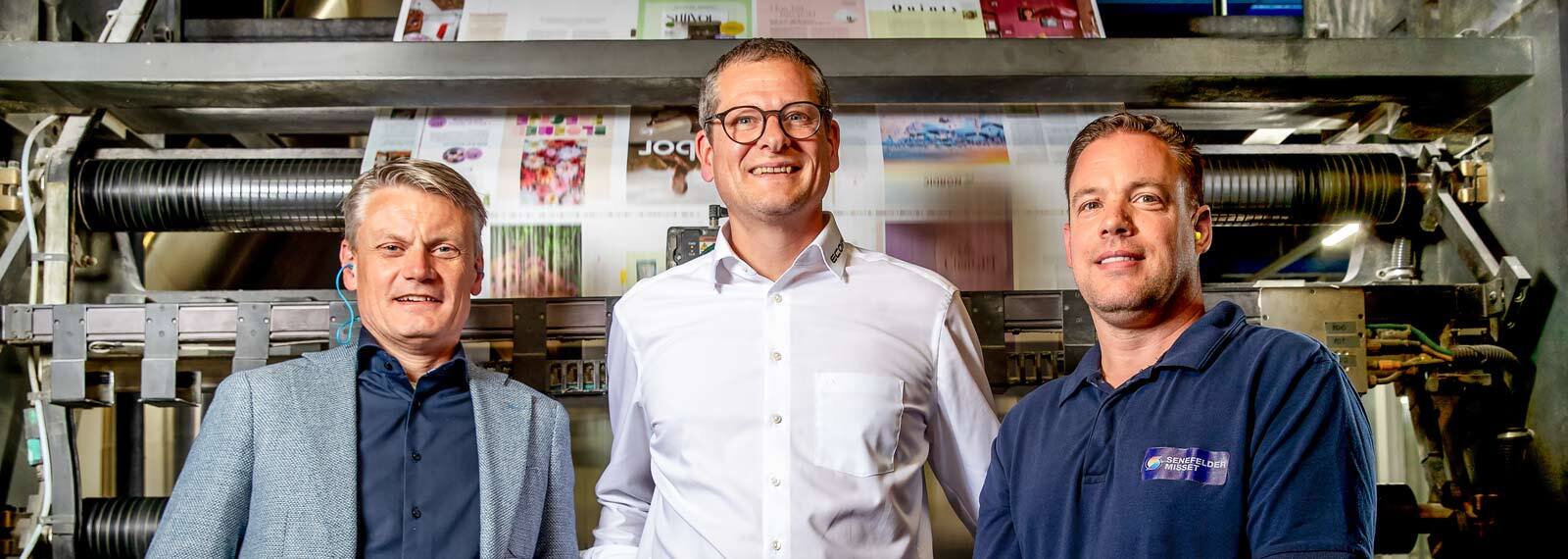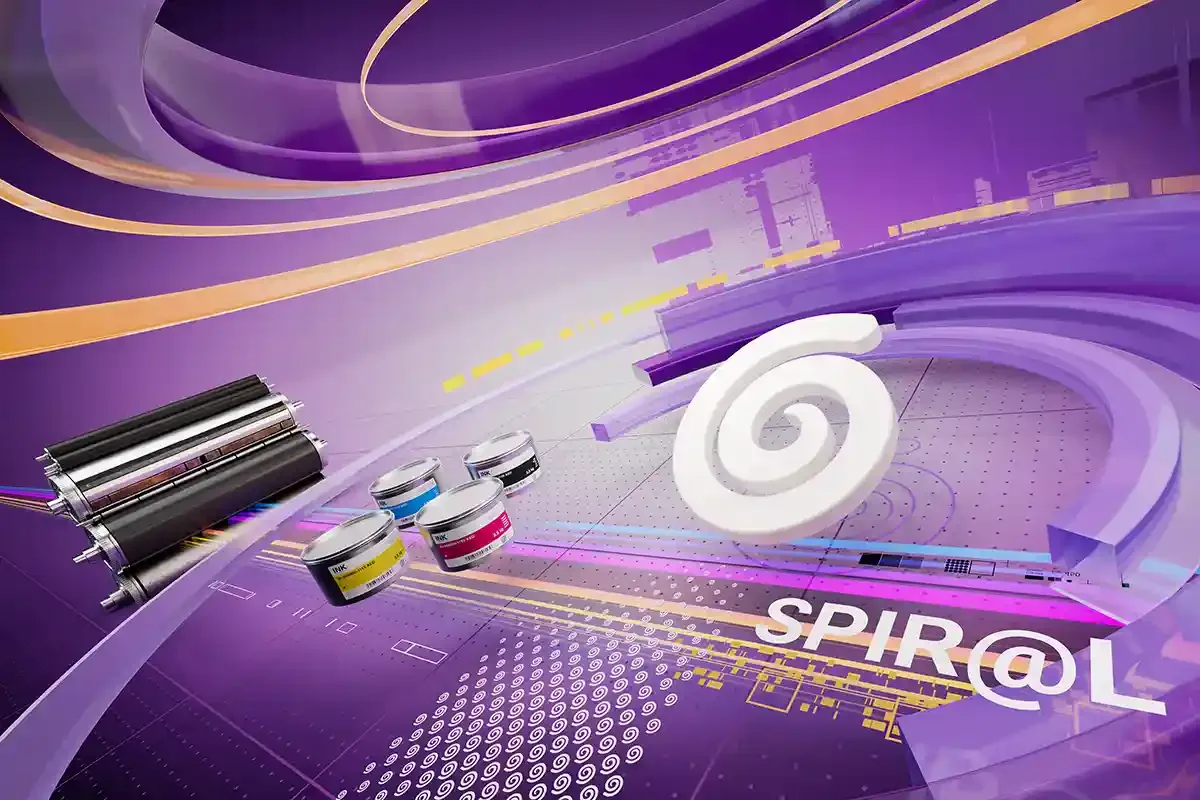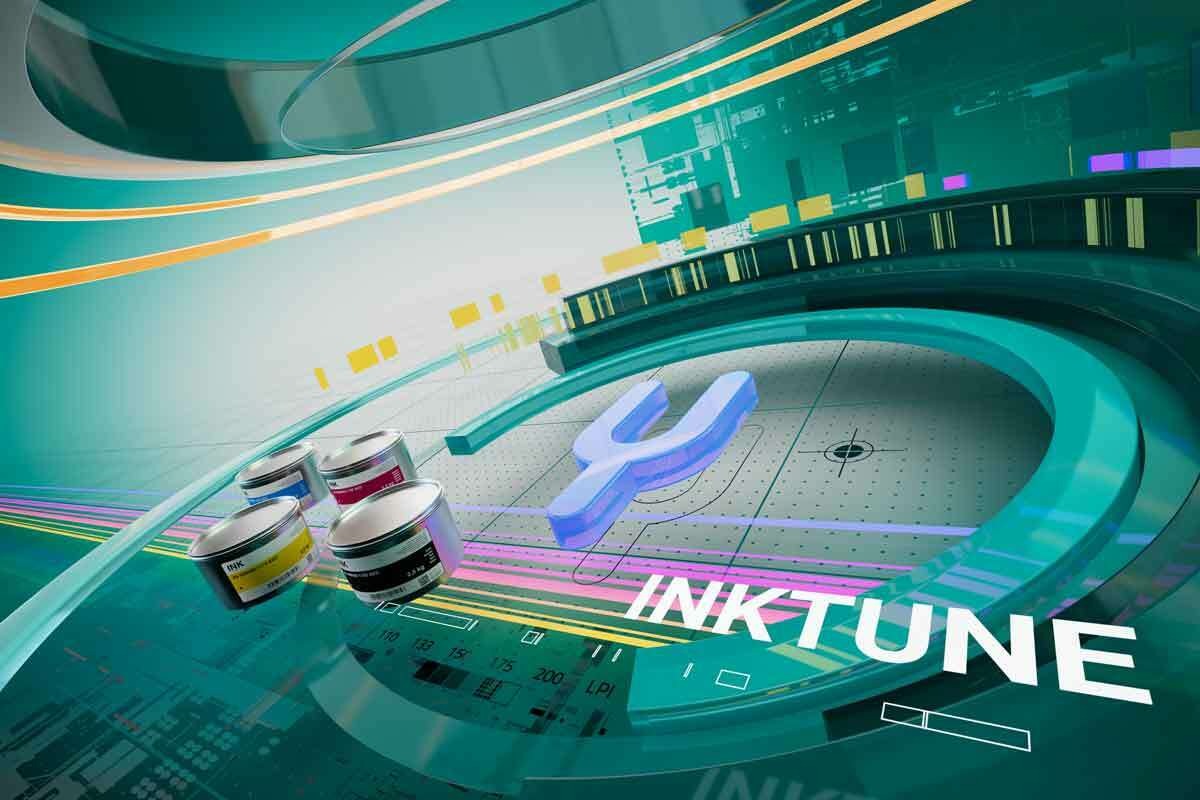
Senefelder Misset is making significant savings on ink consumption thanks to SPIR@L, ECO3’s screening technology. The largest magazine printer in the Netherlands had already streamlined its entire process, from order intake to prepress, with ECO3 Apogee workflow software.

Senefelder Misset is a specialist printer of magazines, travel brochures, catalogs and related products, founded in 1873. Based in Doetinchem, the Netherlands, the company runs four Manroland web offset presses and one KBA sheetfed offset press. As a full-service provider employing 195 people, it handles all production steps, up to, and including, mail processing.
During a visit to Senefelder Misset, we spoke with Director of Operations Marcel ten Pas and Assistant Team Leader for Printing Harold Wenting. Erik Peeters, Worldwide Marketing Manager Software Solutions, joined us on behalf of ECO3. He spoke about the role screening software plays in the prepress journey:

“With our InkTune technology, Senefelder Misset already had an ECO3 application for Gray Component Replacement (GCR), which substitutes percentages of cyan, magenta and yellow with black ink. This typically allows you to make considerable ink savings without the print result changing noticeably.”
Peeters continued: “SPIR@L builds on that concept; quality is maintained, and additional ink reduction is achieved. SPIR@L is effective on the midtones, from 20% to 80%. In that range, we don’t use a round, square or elliptical raster dot – we build the dot in a spiral shape. When placed on that shape, the ink not only moves outwards due to absorption by the paper, but it also moves inwards. As a result, less ink is required to create a good raster dot."

“A third ECO3 solution that fits in nicely with SPIR@L is SolidTune, which works in the solid areas. Tiny holes are created to increase the printability of the substrate and to achieve a small ink reduction. Through the interaction between SPIR@L and SolidTune, printers gain more color stability with ink and their costs are reduced.”
Putting SPIR@L to the test
Marcel ten Pas explains: “We were interested in this innovative technology and decided to put it to the test. In March, we started the discussion with ECO3. Our main question was: ‘Can we run a pilot to find out whether SPIR@L really delivers on its promises?’ In May, we carried out several tests in a split run: we divided the orders into a print run with traditional screening and a print run with SPIR@L screening. We saw a substantial reduction in ink: between 8% and 15%, depending on the color scheme and paper type. Mid-year, we signed a commercial agreement with ECO3 to implement SPIR@L.”

Converting the machine park
Harold Wenting shared more about the first implementation of SPIR@L on a Manroland press: “For each type of paper we use on this press, the calibration of the curves had to be determined again, as well as the type of SPIR@L. With this curve, you ensure that the tolerance of the dot gain is within the standard.”
ten Pas adds: “The great thing about the collaboration with ECO3 is that at first, we needed, and received, a lot of guidance in order to convert the paper types to the new screening technology. This meant that with the next presses, the process was much faster. Two 48-page presses have now been converted. The other two, narrower 16-page presses and the sheetfed offset press will follow soon.”
Higher print quality
The whole project will be fully assessed later, but ten Pas and Wenting have no doubt that they will achieve ink savings in line with those of the test runs. They have already enjoyed the positive effect of the transition to SPIR@L screening.
One of the first Libelle Magazine sections we printed using this technology featured an image of a window. With traditional screening, the image might have made you think it needed a window cleaner. With SPIR@L, however, the difference was striking—the image appeared crystal clear, with enhanced detail, as if the window had already been cleaned.
Marcel ten Pas, Director of Operations - Senefelder Misset
Wenting continues: “The sharpness has improved because of the reduced ink flow. Before, the blue tended to slant toward magenta when compressed because of the combination of cyan and magenta. With SPIR@L, we no longer see that effect. Jeans are now truly blue instead of having a reddish hue. The color intensity is full, and the sharpness remains intact.”
When all presses are set up with SPIR@L, the implementation of SolidTune for optimized ink transfer in the solid areas will likely follow. In the meantime, adjusting the calibration curves for SPIR@L remains part of the process. Wenting adds: “Even with the same type of paper, there are slight differences between suppliers. In addition, more and more customers are switching to paper made from recycled fibers which can behave differently, so you need to adjust the calibration curve.”

Saving with workflow automation
The collaboration between Senefelder Misset and ECO3 did not start with SPIR@L. Since 2017, the company has been using ePS Technique MIS/ERP in combination with Apogee, ECO3’s software for the automation of the entire prepress workflow.
Linking these two solutions streamlines the entire process, from order intake to plate production. Koos Wellink, Team Leader Data & Mailing Support, has been onboard from the start and explains the benefits:
An order manager will complete the order in ePS Technique, including planning, paper order, etc. Once the JDF button is pressed, Apogee is applied automatically: it generates dynamic layouts, and the customer receives a secure login to upload files. After automatic checking and approval of the files, the order goes to the plate exposure. Apogee retrieves all the data needed for the correct processing of the files on the press: the color profiles, the linearization curves for the exposure units, and so on, which saves a lot of time. The preliminary phase of entering trims and all kinds of other data in ePS Technique has become very important, because Apogee automatically accumulates that data to create the production order. But you don’t have to re-enter anything in prepress after the JDF has been sent.
Reducing risk of errors
With the integration of ePS Technique and Apogee, the number of prepress employees at Senefelder Misset has been halved to three. Prepress automation has also reduced the risk of errors because data is no longer entered manually into the system. At many other printing companies, however, there is still a separation between MIS, technology and order management on the one hand, and prepress on the other.
Our employees don’t want to go back to the old ways because Apogee is such a user-friendly program that works very well and quickly. We produce many weekly magazines here on tight schedules. With Apogee, we can easily meet our deadlines, and we deliver everything to our courier PostNL within 24 hours. And finally, our customers also like Apogee, because the system includes a web portal where they can follow the entire production process and make adjustments.
Marcel ten Pas,
Original article in Dutch published by PrintMatters
Senefelder Misset website
SPIR@L
This new screening technology replaces the traditional ink dot with more efficient shapes such as spirals. This has a positive impact on print quality and results in a crystal-clear image every time without effort.
Discover
InkTune
Reduce ink consumption by up to 30% while maintaining or even increasing print quality: InkTune is your golden ticket to lower cost-of-ownership and higher profitability.
Discover